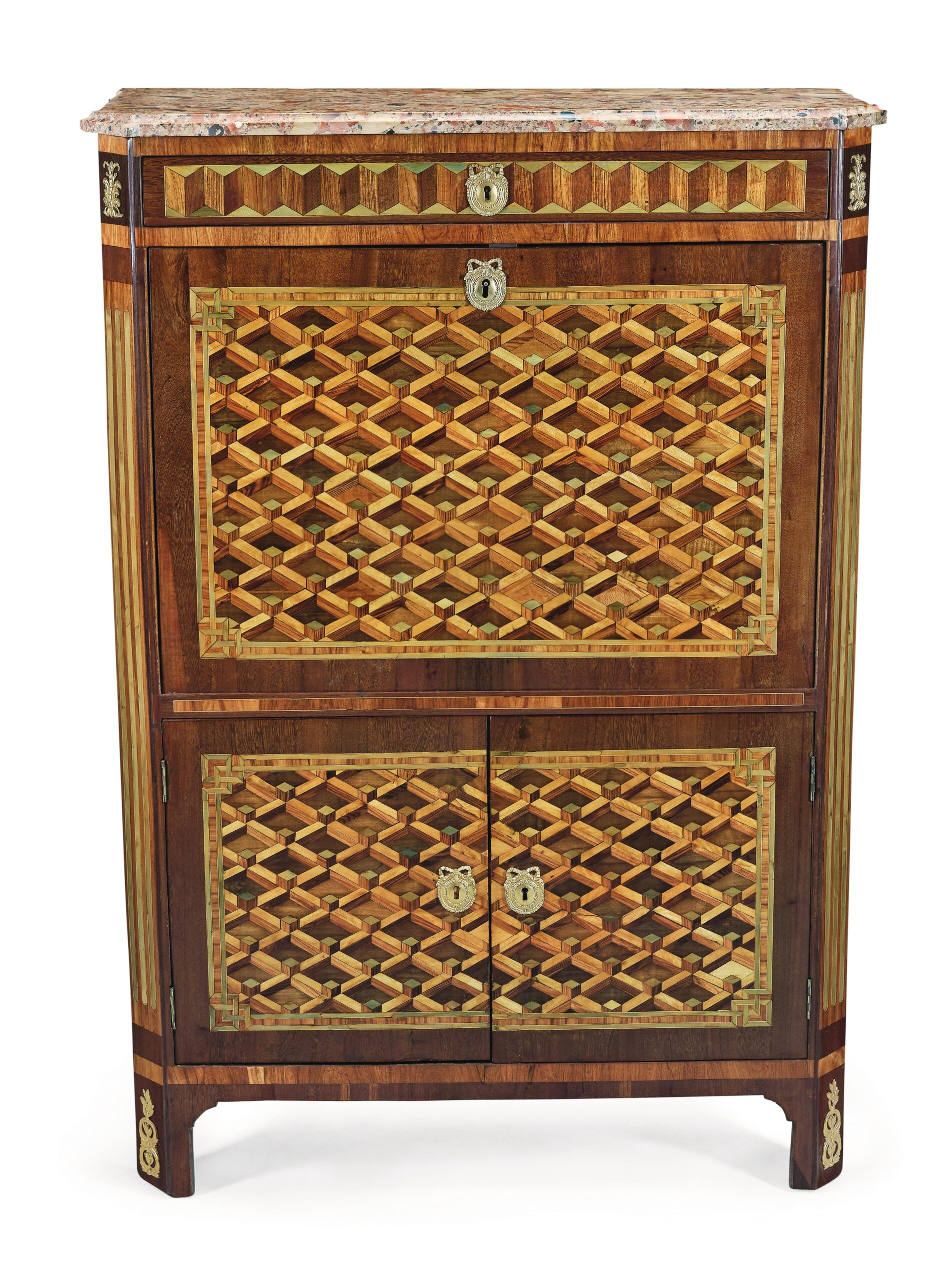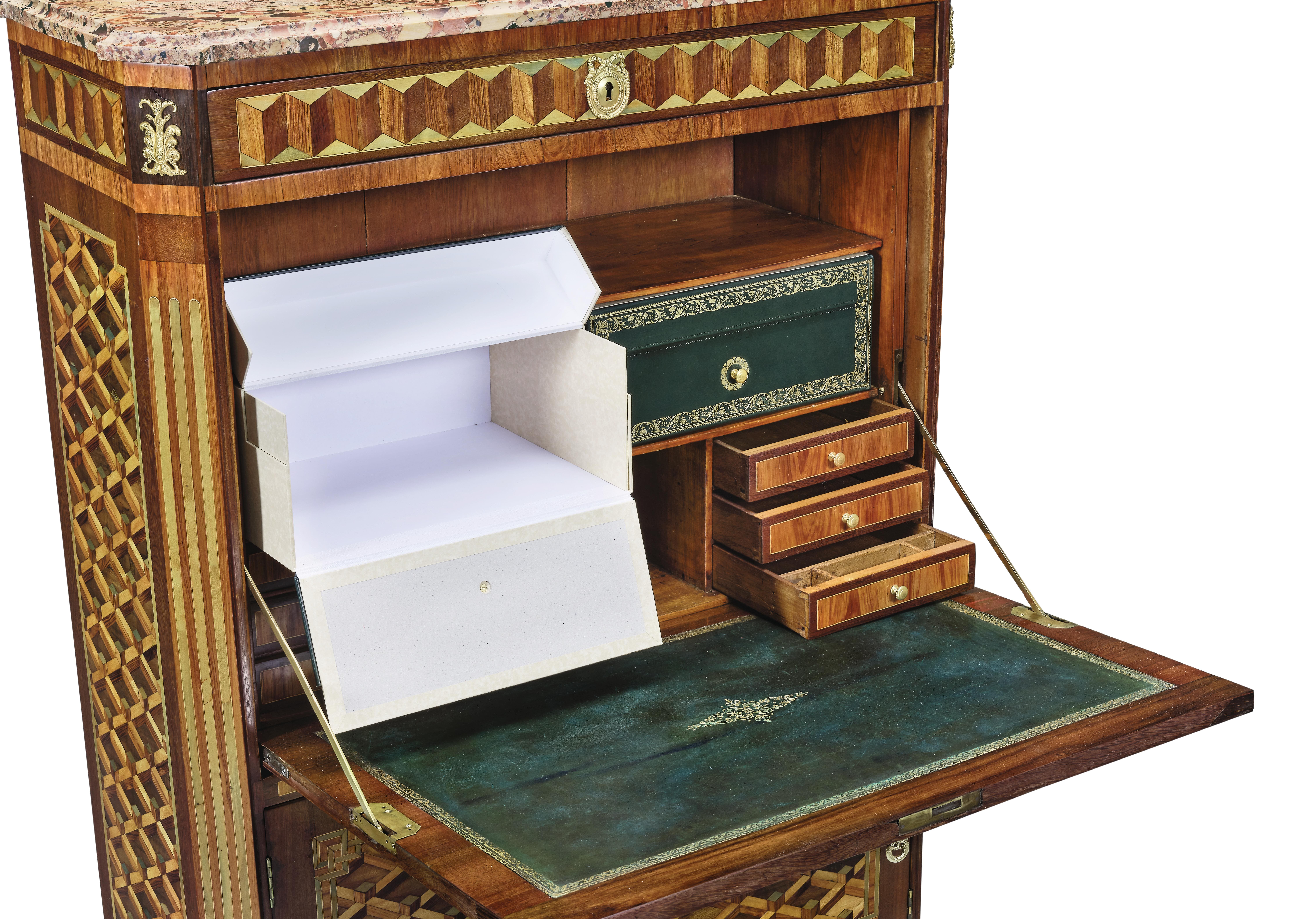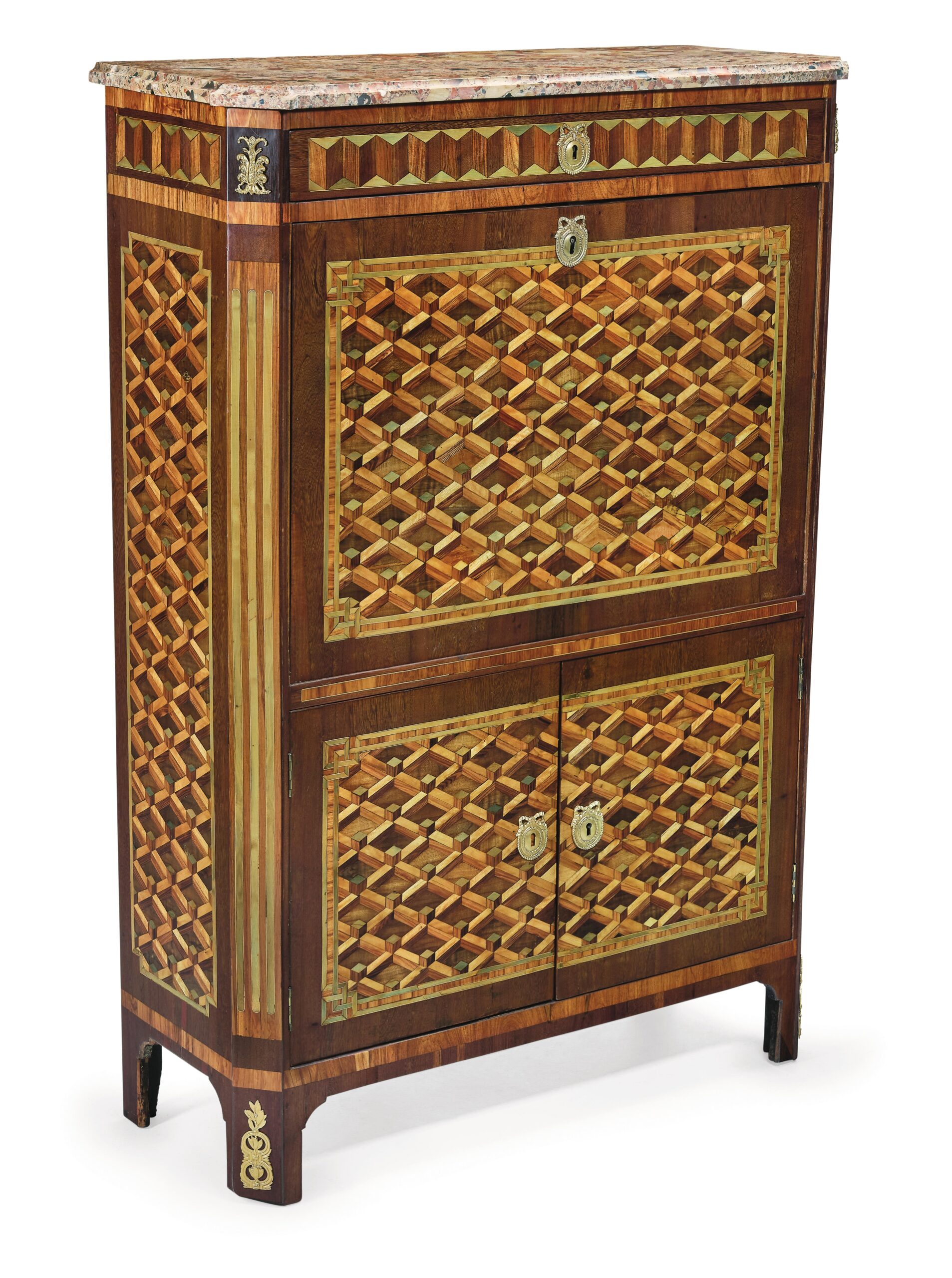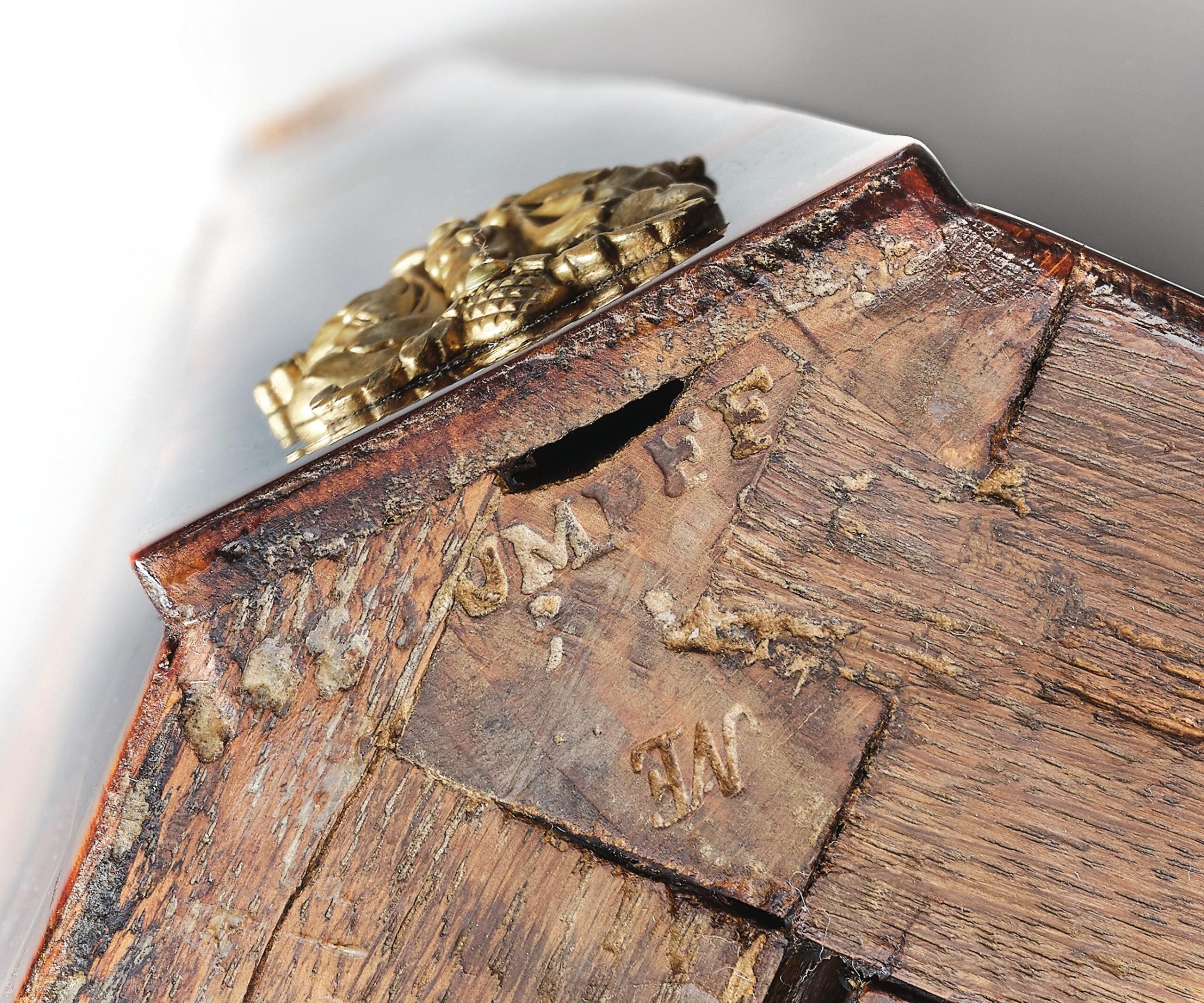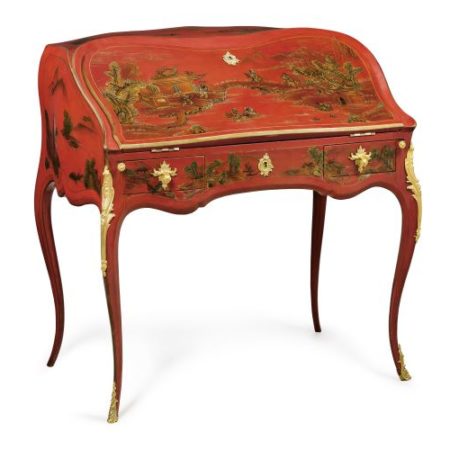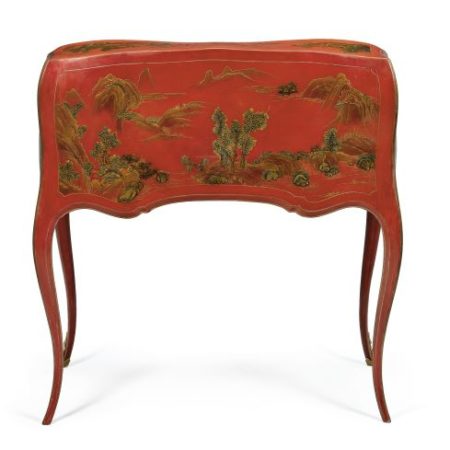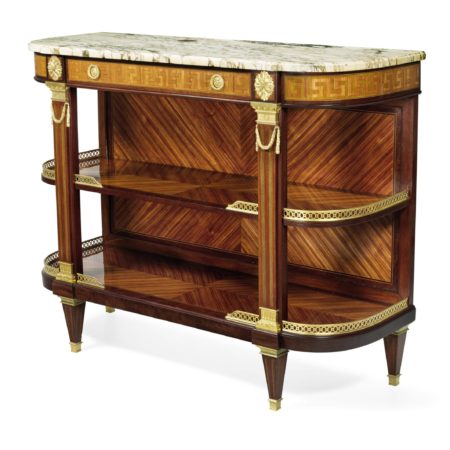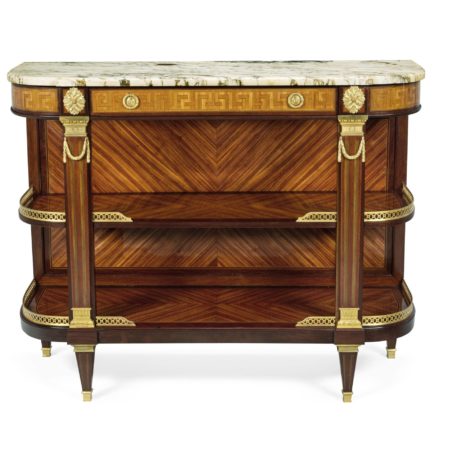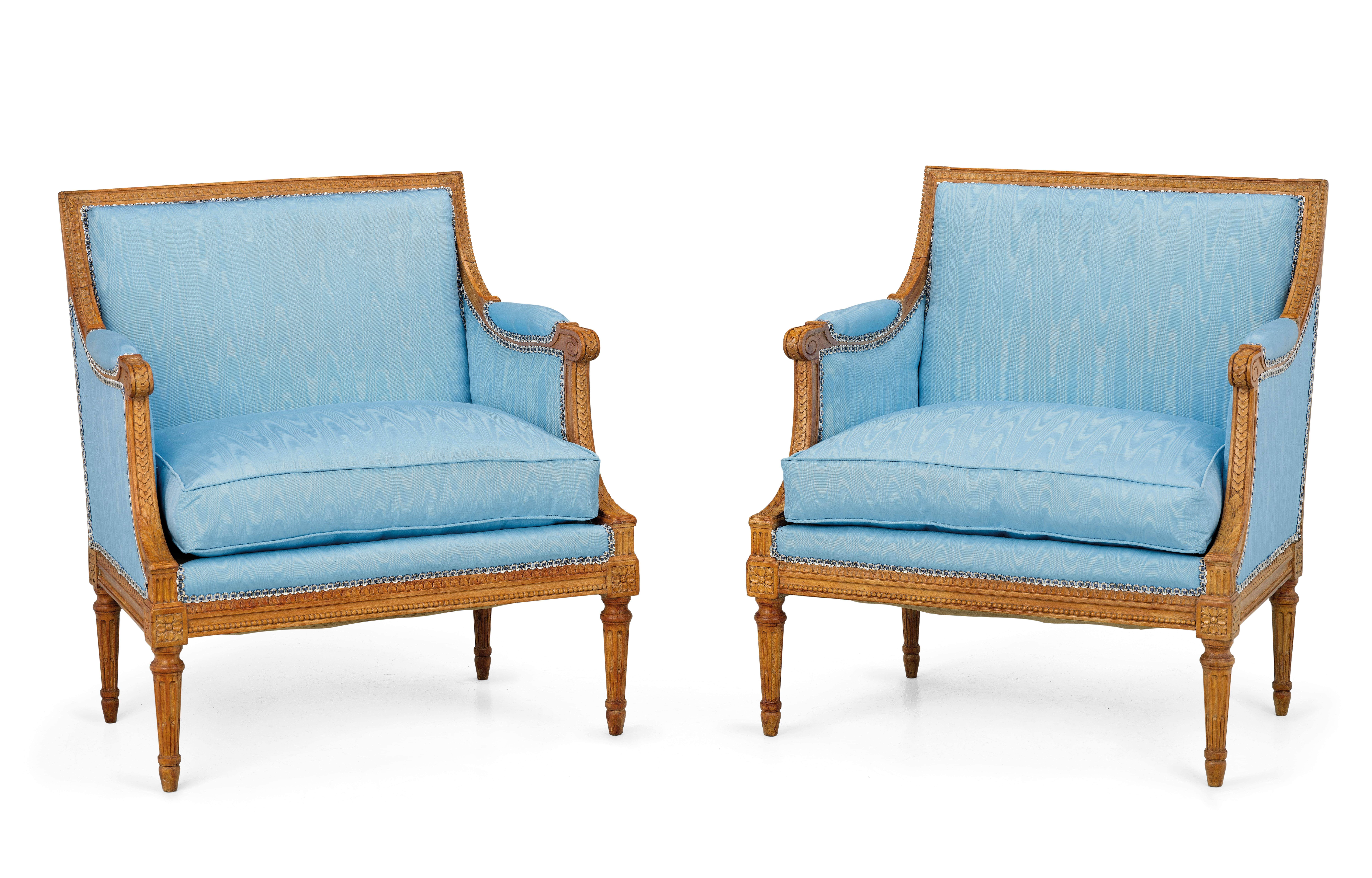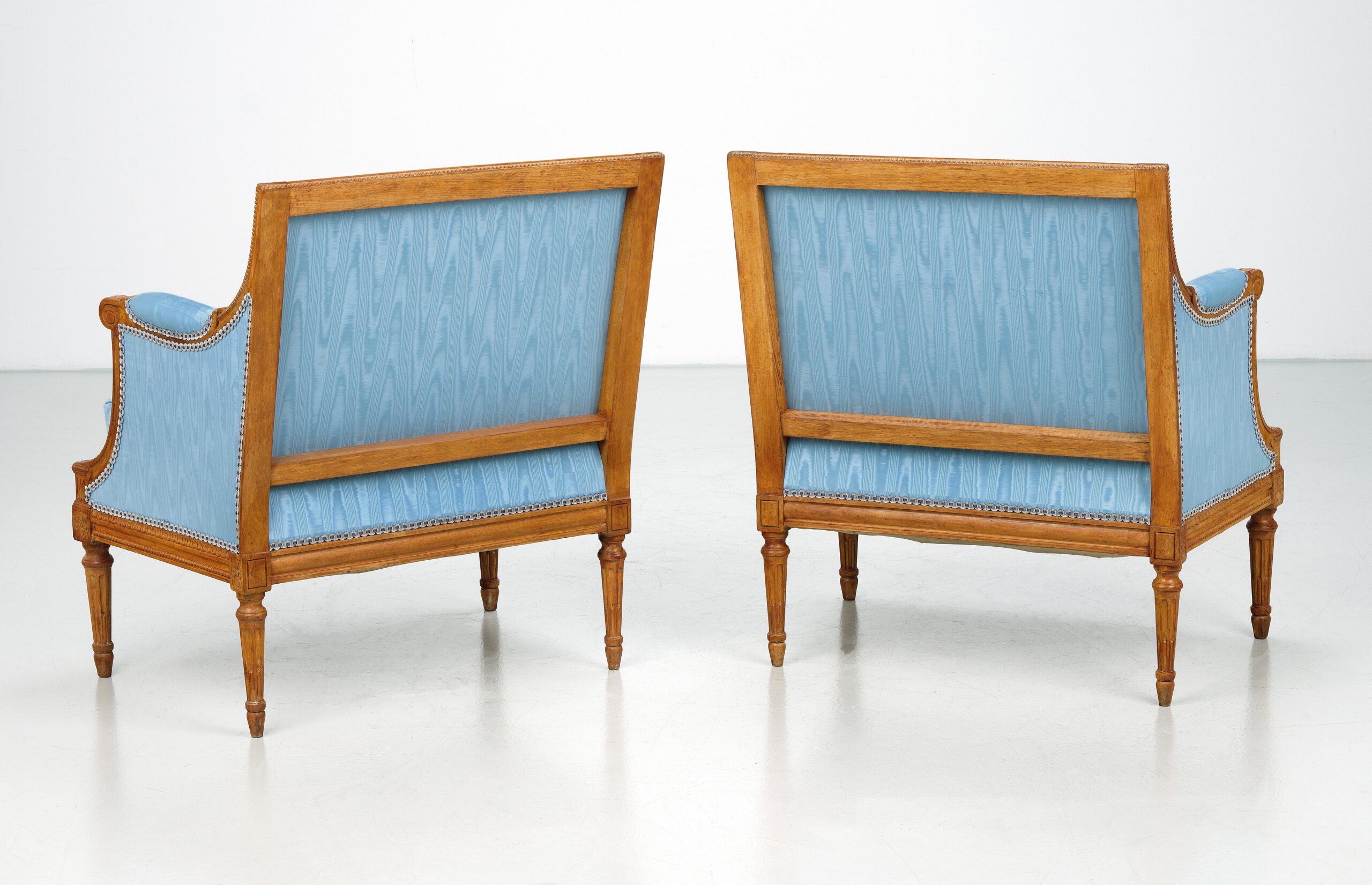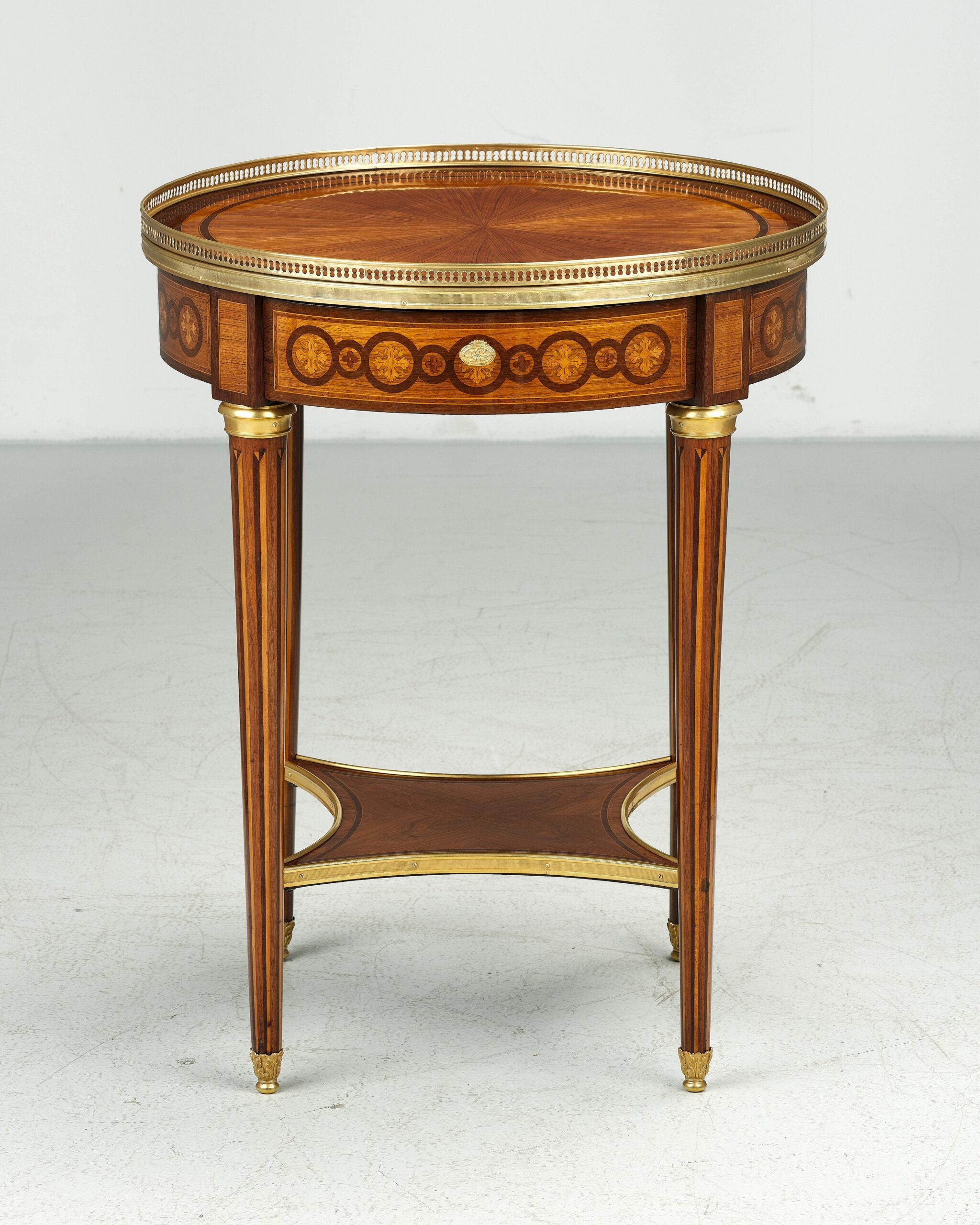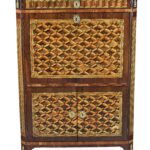Description
Louis XVI period, by the French cabinetmaker Jean Chrysostome Stumpff (master from 1766), circa 1775, stamped, softwood body, veneered with rosewood and amaranth as well as with various partially coloured precious woods, marquetry in pattern themes typical of this cabinetmaker, polished in traditional craftsmanship, 2 doors, 1 drawer and writing flap on the front, interior with 6 inner drawers, open compartments and two gold-decorated cartoniers, gilded chiselled bronze mounts, 139 x 97 x 98 cm, beautiful, perfectly restored condition.
This type of “Trompe-Oeil” marquetry, a combination of cube and diamond patterns, can be found on chests of drawers and desks as well as on secretaries by Jean Chrysostome Stump. This three-dimensional pattern, most probably invented by Stump himself, became such a success that other renowned ebenists such as Roger Vandercruse, Pierre Roussel and Jean George Schlichtig also used it on their furniture. Two almost identical secretaries are illustrated in Pierre Kjellberg’s reference book “Le Mobilier francais du XVIII siecle”, 1998 edition, as works by Jean Chrysostome Stump (page 827) and Jean Georges Schlichtig (page 791). Subject to species protection (ASB)


